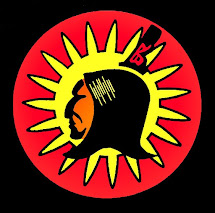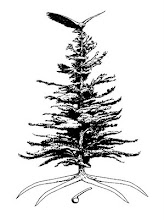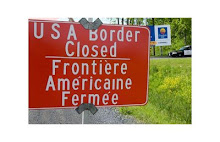Published: December 13, 2010, New York Times
“It seemed that the purpose of the singing and dancing was only to sustain each other in their last ordeal,” a witness observed. “As the last moment rapidly approached, they each called out their name and shouted in their native language: ‘I’m here! I’m here!’ ”
Thirty-seven of the men were among the “most ferocious” followers of the Dakota leader Little Crow, according to the federal government. They stood accused of killing approximately 490 settlers, including women and children, in raids along the Minnesota frontier.
But one man, historians say, did not belong there. A captured Dakota named We-Chank-Wash-ta-don-pee, often called Chaska, had had his sentence commuted by President Abraham Lincoln days earlier. Yet on the day after Christmas 1862, Chaska died with the others.
It was a case of wrongful execution, Gary C. Anderson, a history professor at the University of Oklahoma and Little Crow biographer, said last week in an interview. “These soldiers just grabbed the wrong guy,” he said.
Although the story of the mass execution in Mankato is well-known locally, scholars say the case of Chaska — spared by Lincoln, then wrongfully executed — has been long overlooked by the federal government and all but forgotten even by the Dakota.
Now, an effort to keep the story alive is taking root on campuses and even on Capitol Hill as the 150th anniversary of the execution, in 2012, approaches. Commemorative events will include symposiums, museum exhibits, monument re-dedications, book publications and an original symphony and choral production.
“It’s time to talk about it and time for people to know about it,” said Gwen Westerman, a professor of English at Minnesota State University at Mankato and a member of the Dakota who is planning to investigate Chaska’s case and the cultural context of the conflict with a class. She says she is hoping her students can “put together some more pieces of the puzzle.”
“Because there is a historical record” for Chaska’s commutation, Ms. Westerman said, “that’s a good place to start.”
A move to award Chaska (pronounced chas-KAY) a posthumous pardon has drawn some initial support. Before his defeat in November, Representative James L. Oberstar, Democrat of Minnesota, said a federal pardon would be “a grand gesture and one I think our Congressional delegation should support.”
“A wrong should be righted,” he added.
Senator Al Franken, a Minnesota Democrat who sits on the Committee on Indian Affairs, issued a statement last week signaling that he might move the issue forward.
“Senator Franken recognizes that this is a tragic period in history,” said his press secretary, Ed Shelleby. “The senator will continue to look into this incident in the next Congress.”
Tension between the Dakota, historically called the Sioux, and the influx of settlers had been mounting for years before the Civil War, which further strained United States resources, disrupting food and supplies promised to the Dakota in a series of broken peace treaties. One local trader, Andrew Myrick, said of the Indians’ plight, “If they are hungry, let them eat grass.”
Enraged and starving, the tribe attacked and plundered the new state’s settlements. Of the 400-plus Dakota and “mixed blood” men detained by Brig. Gen. Henry Hastings Sibley, 303 were sentenced by a military court to death. But Lincoln found a lack of evidence at most of the tribunals, and he reduced the number of the condemned to 38.
We-Chank-Wash-ta-don-pee’s case was No. 3 and not listed in the execution order handwritten by Lincoln, but his fate may have been the result of mistaken identity. The man he died for was No. 121, identified by Lincoln as Chaskey-don or Chaskey-etay, who had been condemned for murdering a pregnant woman.
But historians say something far more complex may have been responsible for Chaska’s death: rumor. During the raids, Chaska took a white woman, Sarah Wakefield, and her children prisoner — not an uncommon occurrence during the Dakota War.
What was uncommon, however, was Wakefield’s defense of her captor at his military tribunal. Chaska defended her and her children, she said, and kept them from certain death and abuse at the hands of his fellow tribesmen. “If it had not been for Chaska,” Wakefield said, “my bones would now be bleaching on the prairie, and my children with Little Crow.”
One prison chaplain wrote to her after the hanging: “Dear Madam: In regard to the mistake by which Chaska was hung instead of another, I doubt whether I can satisfactorily explain it.”
Wakefield firmly believed that Chaska was executed on purpose, in retaliation for her testimony and in reaction to rumors that she and Chaska were lovers. General Sibley, who appointed the tribunal that convicted Chaska, privately referred to him as Wakefield’s “dusky paramour.”
Wakefield denied any sexual relationship in the booklet she wrote the year after his death, titled “Six Weeks in the Sioux Teepees.” She wrote, “I loved not the man, but his kindly acts."
Some details of the conflict have been willfully buried or forgotten, by both sides of the war. The Dakota conflict came in 1862, which historians have described as Lincoln’s “darkest year” during the Civil War. It was the year the president lost his 11-year-old son, Willie, to typhoid fever. Thousands died on the battlefields at the Battle of Bull Run and at Fredericksburg, as Lincoln fought with his own generals. In large part, the narrative of mass execution in Mankato was lost in the United States’ struggle to preserve the union.
Lincoln himself was distressed at the speed of the military tribunals that condemned 303 men, and his decision to commute most of the sentences was politically dangerous. But he said, “I could not afford to hang men for votes.” The 265 Dakota Indians Lincoln spared from the gallows were either fully pardoned or died in prison.
Modern Mankato, once a prairie outpost, is now a city of 37,000, where a modest downtown struggles for survival, competing against outlying strip malls and chain stores.
The only reminders that 38 Indians died here is a Dakota warrior statue and plaque outside the local library. The location of the actual scaffold is now called Reconciliation Park.
Glenn Wasicunna, a Dakota language teacher and husband of Ms. Westerman, said that for decades, his people would not even drive through Mankato during the day. The place carried too many memories, too much cultural trauma, he said.
“These were our family,” Ms. Westerman added. “These were people my great-grandparents knew. They have a direct effect on who we are.”
Each year on Dec. 26, the annual Mankato memorial run acknowledges those who died in the mass execution. But Wayne Wells, a Dakota language teacher on the nearby Prairie Island reservation, said there would be a range of response to a pardon just for Chaska. Many Dakota, he said, “consider all of them to be innocent martyrs — people who stood up and died for us.”
However, Leonard Wabasha, a local Dakota leader, said a federal pardon for Chaska would “shine a light.”
“It would cause people to read and research into it a little deeper,” Mr. Wabasha said. “It would be a step in the right direction.”













![-[]-[]-/\-[]-[]-](https://blogger.googleusercontent.com/img/b/R29vZ2xl/AVvXsEjLoXmKO8PJVQ5pZ2q7GX7nFKw8H2tb28dxt-o10FUBNtOGszWhWoLB7tgjtMgtISpuSxNW3fcDxfuSS2DqojsdjNJ1lVggyUS374PnzsDbOhk4ukvtTunFQcyfkckZeBzcLbri4LDYN_E/s214/29-03-A-voice-from-the-Akw-.jpg)




